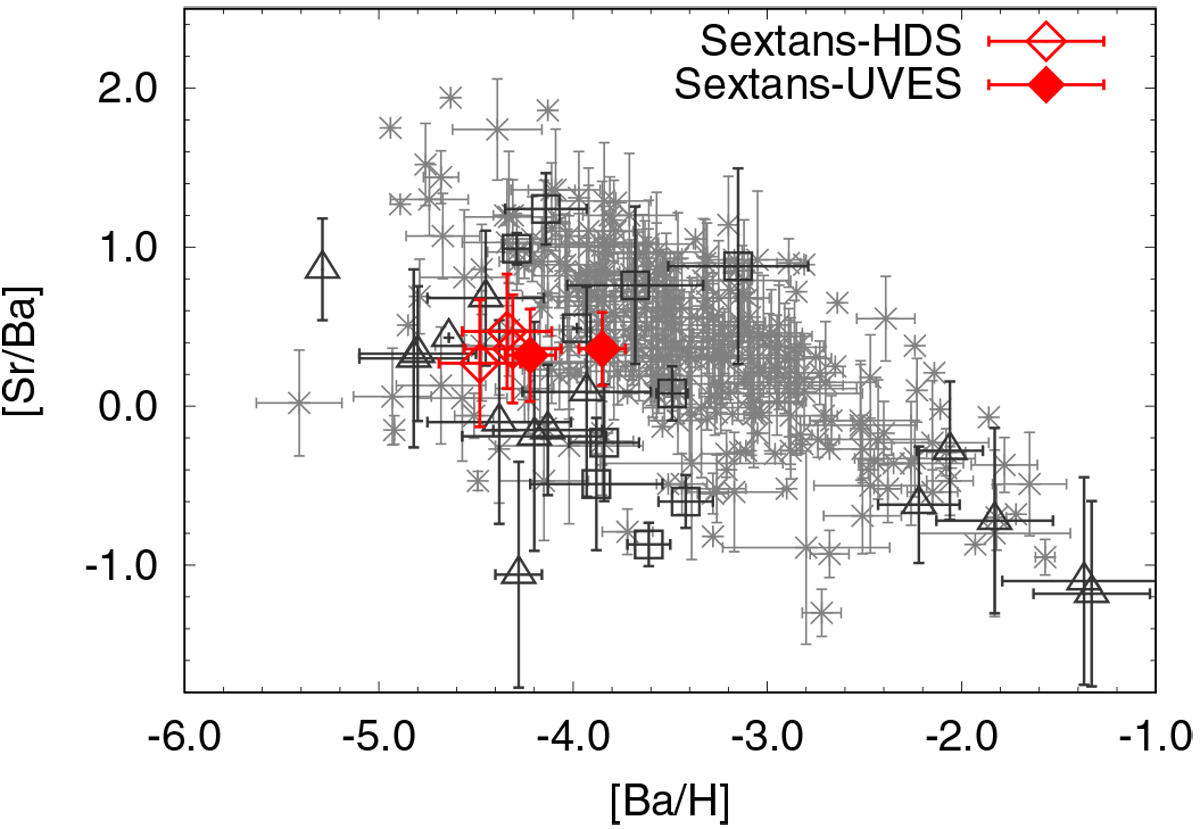Fig. 8

[Sr/Ba] as a function of [Ba/H], showing a comparison between our results and those of previous studies. Stars in classical dwarf spheroidal galaxies are shown by squares for Carina (Venn et al. 2012), Draco (Cohen & Huang 2009), Sculptor (Starkenburg et al. 2013; Jablonka et al. 2015), and Ursa Minor (Kirby & Cohen 2012; Cohen & Huang 2010), and stars in ultra faint dwarf galaxies are shown by triangles for Reticulum II (Ji et al. 2016), Coma Berenices (Frebel et al. 2009), Leo IV (Simon et al. 2010), Triangulum II (Kirby et al. 2017), Tucana II (Chiti et al. 2018), Horologium I (Nagasawa et al. 2018), Bootes I (Ishigaki et al. 2014) and Ursa Major II (Frebel et al. 2009). The asterisks show Milky Way halo stars. The stars in dwarf galaxies and Milky Way halo stars shown here have [Fe/H] between − 3.22 and − 2.65.
Current usage metrics show cumulative count of Article Views (full-text article views including HTML views, PDF and ePub downloads, according to the available data) and Abstracts Views on Vision4Press platform.
Data correspond to usage on the plateform after 2015. The current usage metrics is available 48-96 hours after online publication and is updated daily on week days.
Initial download of the metrics may take a while.


